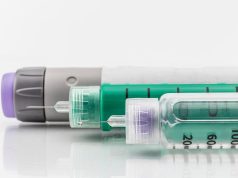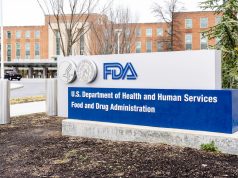Lower bleeding rate with administration once weekly, every two weeks versus no prophylaxis
WEDNESDAY, Aug. 29, 2018 (HealthDay News) — For patients with hemophilia A without factor VIII inhibitors, emicizumab prophylaxis leads to a significantly reduced bleeding rate, according to a study published in the Aug. 30 issue of the New England Journal of Medicine.
Johnny Mahlangu, M.B., B.Ch., from the University of Witwatersrand in Johannesburg, and colleagues randomized patients with hemophilia A without factor VIII inhibitors to receive a subcutaneous maintenance dose of emicizumab of 1.5 mg/kg of body weight/week (group A), 3 mg/kg every two weeks (group B), or no prophylaxis (group C) in a phase 3 multicenter trial. Participants who had been receiving factor VIII prophylaxis received emicizumab at a maintenance dose of 1.5 mg/kg/week (group D). There were 152 patients enrolled.
The researchers found that the annualized bleeding rate was 1.5 and 1.3 events in groups A and B, respectively, compared with 38.2 events in group C; the rate was 96 and 97 percent lower in groups A and B, respectively. Overall, 56 and 60 percent of participants in groups A and B, respectively, had no treated bleeding events, compared with group C, all of whom had treated bleeding events. In the intraindividual comparison involving 48 participants in group D, the annualized bleeding rate was 68 percent lower with emicizumab prophylaxis compared with the rate with previous factor VIII prophylaxis.
“Emicizumab prophylaxis administered subcutaneously once weekly or every two weeks led to a significantly lower bleeding rate than no prophylaxis among persons with hemophilia A without inhibitors,” the authors write.
Several authors disclosed financial ties to pharmaceutical companies, including F. Hoffmann-La Roche and Chugai Pharmaceutical, which manufacture emicizumab and funded the study.
Copyright © 2018 HealthDay. All rights reserved.








